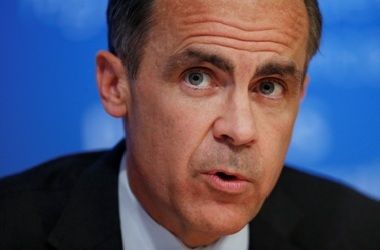(Reuters) - British banks including HSBC and Lloyds have almost completed the job of building up their defences against a future financial crisis, Bank of England Governor Mark Carney said on Tuesday as he set out details of new capital requirements.
Banks may have to hold up to £10bn (US$15bn) more capital to meet rules designed to link the capital they must hold to protect against financial risks to the state of the economy, a relatively small sum compared with the hundreds of billions they have raised to strengthen their position since the financial crisis.
Carney was keen to dispel banks’ fears that the BoE was going further than international rules required, and acknowledged that excess capital requirements could hurt growth.
“With today’s announcement, the basic amount of capital our system requires is settled,” he said, setting out plans for top UK banks including HSBC, Lloyds, Barclays after their annual health check.
RBS and Standard Chartered only passed after taking remedial action.
“While the benefits of increased resilience are clear, higher capital costs are ultimately passed on to borrowers,” he said.
British finance minister George Osborne has called for a “new settlement” with banks after introducing a welter of tougher rules. Carney said there was absolutely no political pressure on the BoE to ease the pressure on lenders.
The BoE’s Financial Policy Committee “seems positively relaxed about the current state of the banking system”, said Samuel Tombs at Pantheon Macroeconomics.
The BoE also released the results of annual ‘stress tests’ into how Britain’s big seven lenders would deal with unexpected economic shocks.
This year the focus was on emerging market and trading risks, and Royal Bank of Scotland (RBS) and Standard Chartered both only passed thanks to steps they took to improve their capital ratios during the process, which lifted their leverage ratios above the minimum 3% level.
The other five big lenders tested – HSBC, Barclays, Lloyds Banking Group, Santander and Nationwide – did not have to take action.
“RBS was always still further behind in the journey but Lloyds and Barclays are fine, with no material threats of further capital raising or, in Lloyds’ case, growing dividends over time,” Richard Buxton, CEO of Old Mutual Global Investors, a shareholder in RBS, Barclays and Lloyds, told Reuters.
Shares in Barclays were up 3.9% at 1145 GMT, RBS was up 3.2%, Lloyds was up 2.6% and HSBC up 1.8% as investors breathed a sigh of relief that the outlook on capital requirements was clearer.
The BoE said that credit conditions were largely back to normal after the financial crisis and therefore banks should hold an extra so-called counter-cyclical capital buffer (CCB) of 1% of risk-weighted assets during such times – equivalent to £10bn across the system.
The BoE was now tweaking the requirements individual banks must meet with a view to imposing the add-on buffer step-by-step from March.
The CCB aims to rein in risky lending at frothier stages of the credit cycle. It stands at zero currently, but the BoE has already required some banks to hold extra capital due to firm-specific risks, meaning some lenders may not have to raise much fresh capital.
Some economists and banking analysts had expected the BoE to raise the CCB this month to 0.5%.
The BoE also said it expected the banking sector as a whole to hold high-grade tier one equity capital of 13.5% of risk-weighted assets by 2019, up from 13% now.
The 13.5% figure is equivalent to 12 or 12.5% of best quality core equity, a level some banks already have.
The BoE has said it wanted to give banks more clarity about its long-run aims for the amount of capital they hold. Banks have complained that in the past, the BoE has unexpectedly piled on extra capital requirements, making it hard for them to lend or decide which lines of business to stay in.
Higher rate risk
The BoE Financial Policy Committee’s report comes as markets brace for the United States to raise interest rates later this month for the first time since the financial crisis.
“Financial market prices remain vulnerable to a sharp increase in market interest rates or the compensation demanded by investors for risky assets,” the report said.
With the BoE’s Monetary Policy Committee unlikely to raise British interest rates until later next year, the FPC is having to take other steps to guard against risky behaviour.
Even if domestic cost pressures are too weak to warrant a rate rise, British consumer and mortgage lending is growing at its fastest rate since the financial crisis.
So-called buy-to-let mortgages – which enable small landlords to purchase property to rent out – showed weaker underwriting standards than residential mortgages and the BoE’s Prudential Regulation Authority said it was examining this.
The FPC said it stood ready to take action if needed and would monitor closely the impact of higher property transaction taxes for buy-to-let purchases which finance minister George Osborne announced last week and will take effect next April.
Additional reporting by Steve Slater, Sinead Cruise and Simon Jessop
